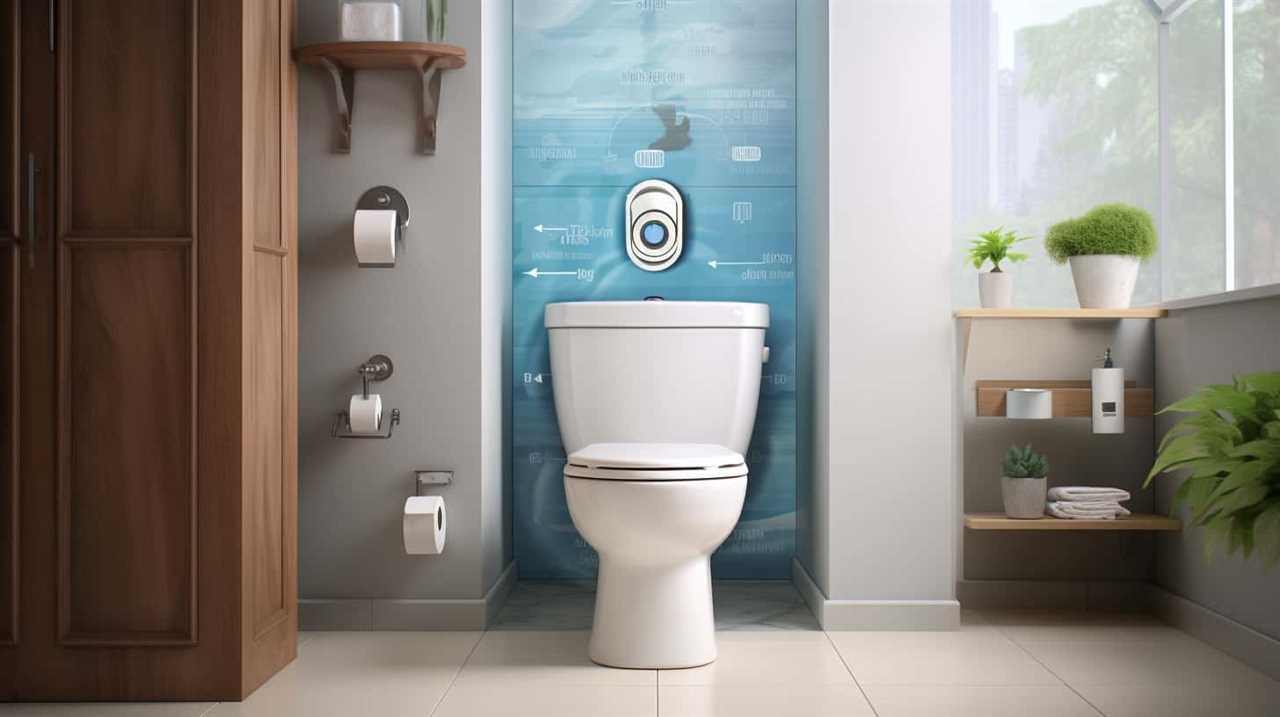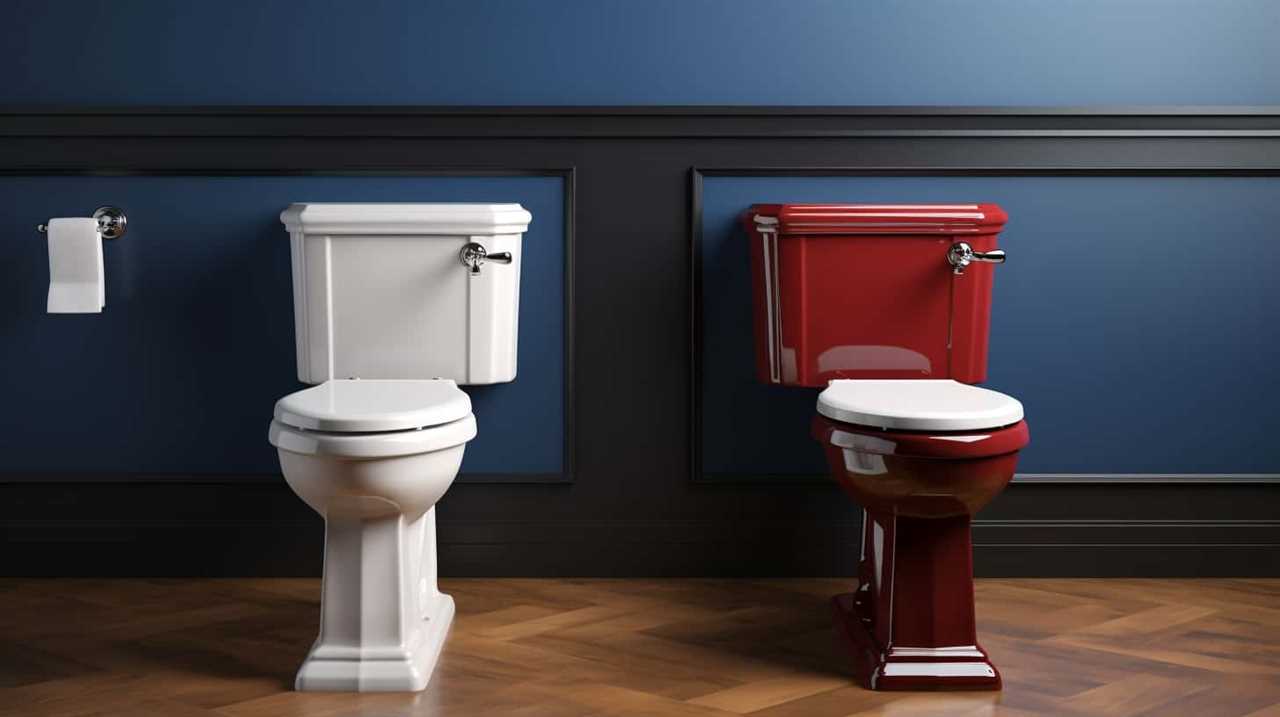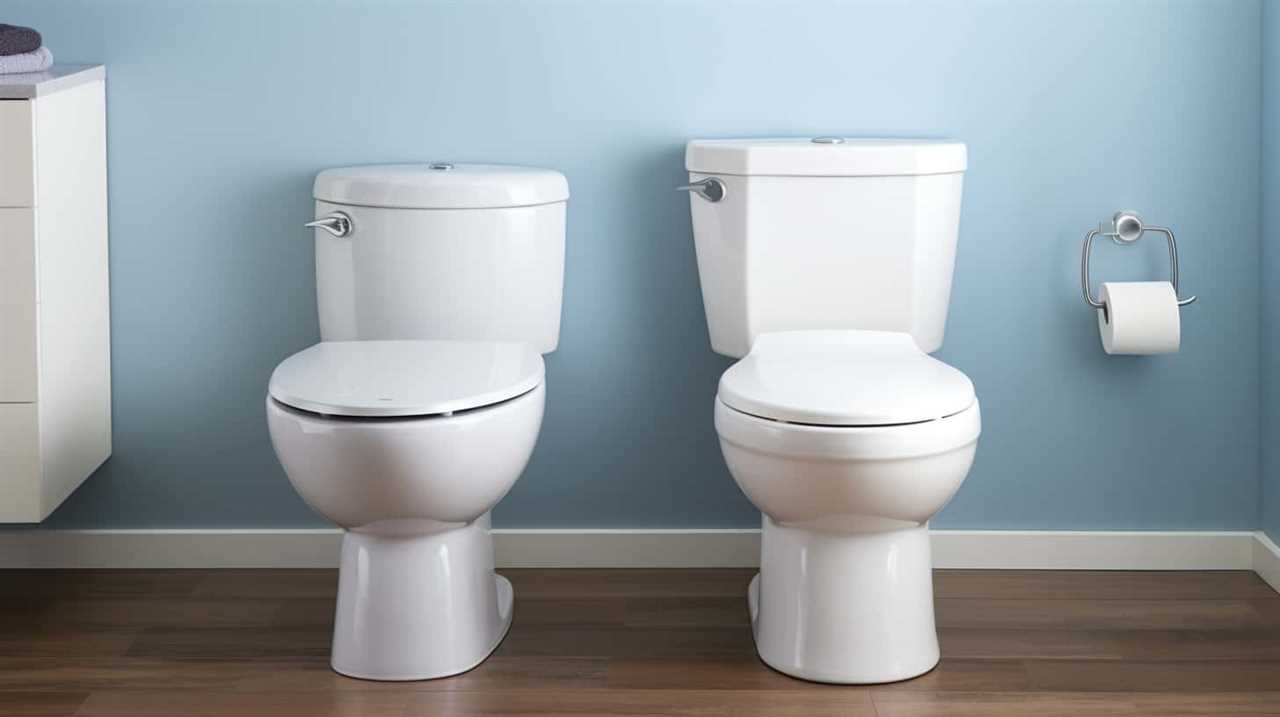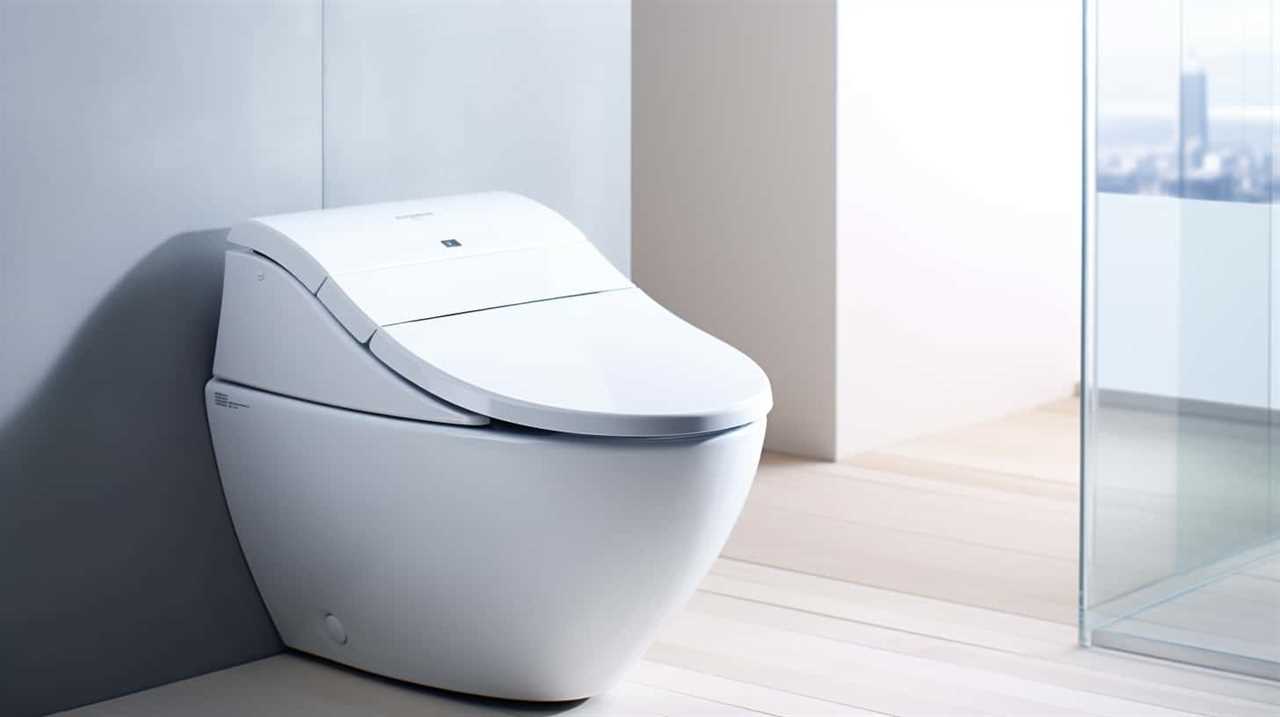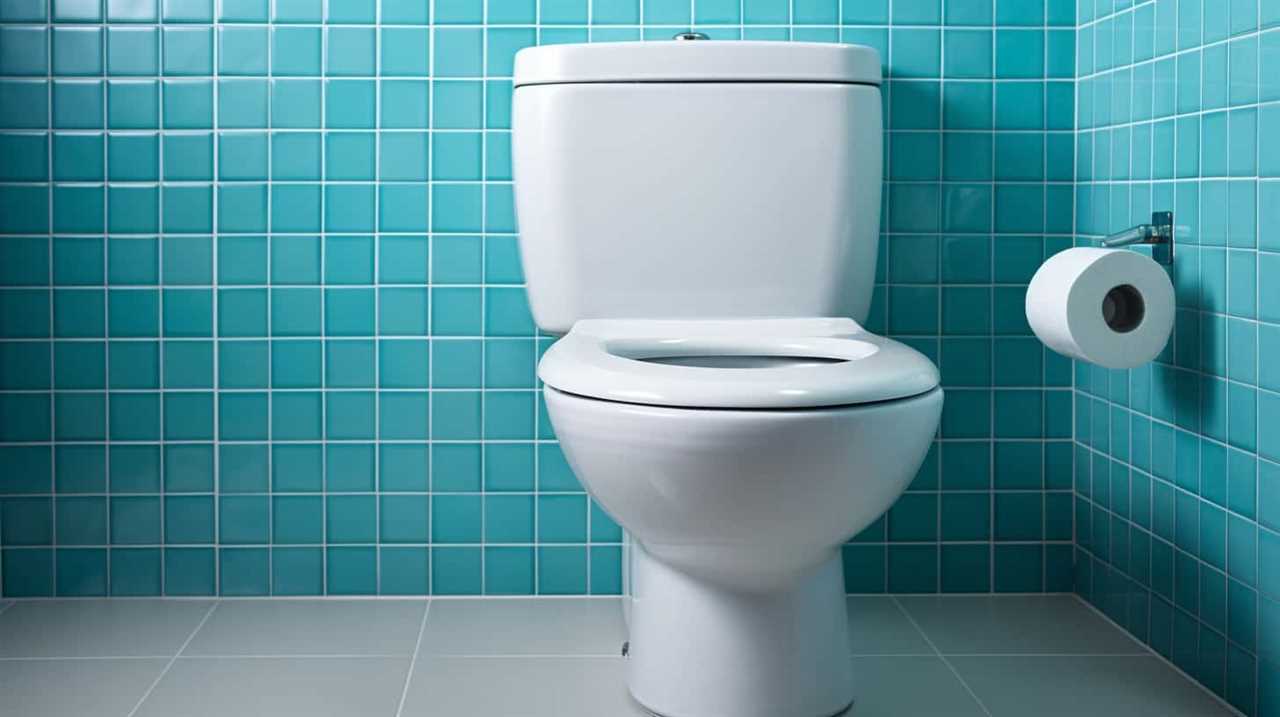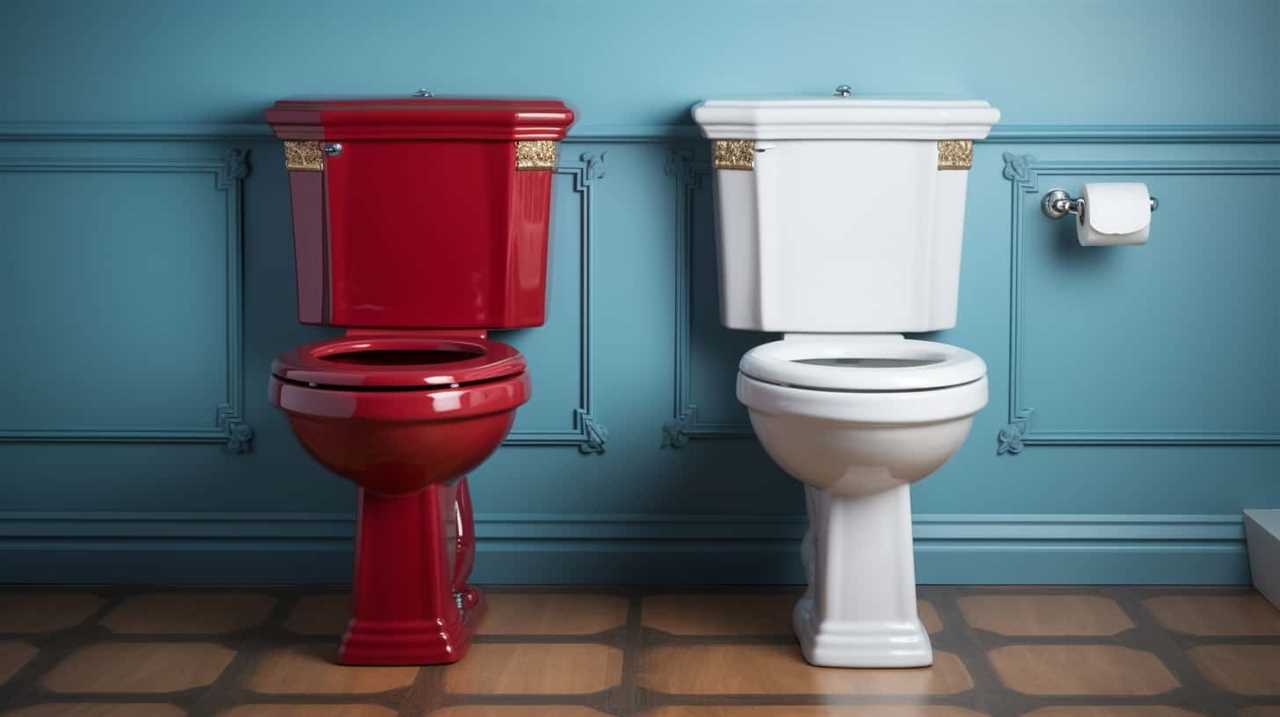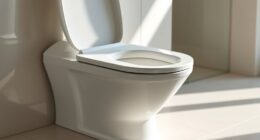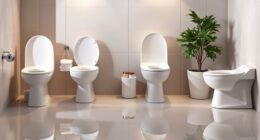Are you tired of wasting water every time you flush the toilet? We have the solution for you!
In this article, we will delve into the world of dual flush toilets and explore the two flush options they offer: the half flush and the full flush. By using these options, you can save water and contribute to a more sustainable future.
Join us as we unravel the secrets of these innovative systems and discover the benefits of adopting this water-saving technology.
Key Takeaways
- Dual flush toilets offer a choice between a full flush and a half flush.
- The half flush uses significantly less water than the full flush and is designed for liquid waste.
- The full flush is meant for solid waste and ensures effective waste removal.
- The use of dual flush toilets reduces water consumption, helps protect the environment, lowers water bills, and contributes to a more sustainable future.
Dual Flush Toilets
Dual flush toilets offer users the choice between a full flush and a half flush, providing an innovative solution for addressing both environmental impact and cost efficiency.
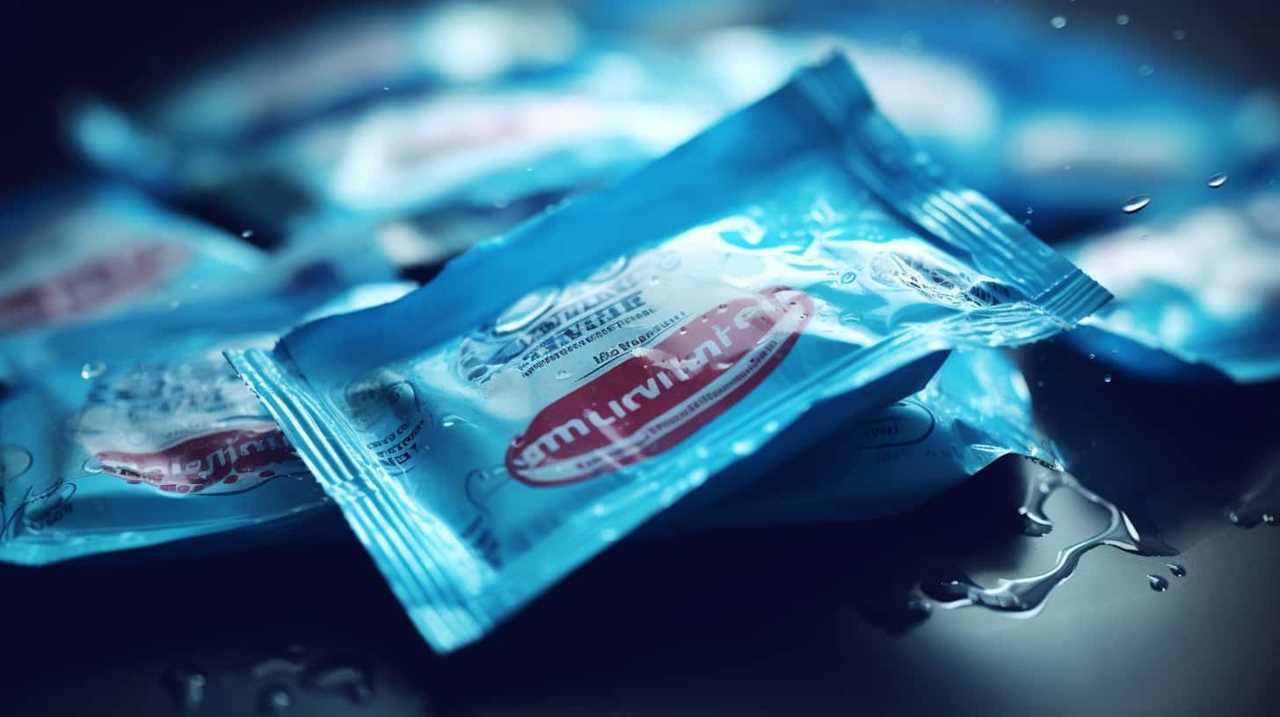
These toilets are designed to conserve water by allowing users to select the appropriate flush option based on their needs. The full flush option is typically used for solid waste, utilizing a larger volume of water to effectively remove waste from the bowl.
On the other hand, the half flush option is ideal for liquid waste, using a reduced amount of water to achieve the same result. By incorporating this dual flush system, these toilets help to minimize water consumption, reduce strain on water resources, and ultimately lower water bills.
Now, let’s delve deeper into the benefits and differences between the half flush and full flush options.
Half Flush Vs Full Flush
When comparing the half flush and full flush options on a toilet, we can distinguish between their water usage and waste removal capabilities. The half flush is designed for liquid waste and uses significantly less water than the full flush. It is a more water-efficient option, as it helps to conserve water by using a smaller volume for flushing. On the other hand, the full flush is meant for solid waste and utilizes a larger volume of water to ensure effective waste removal. The table below illustrates the differences between the two flush options:
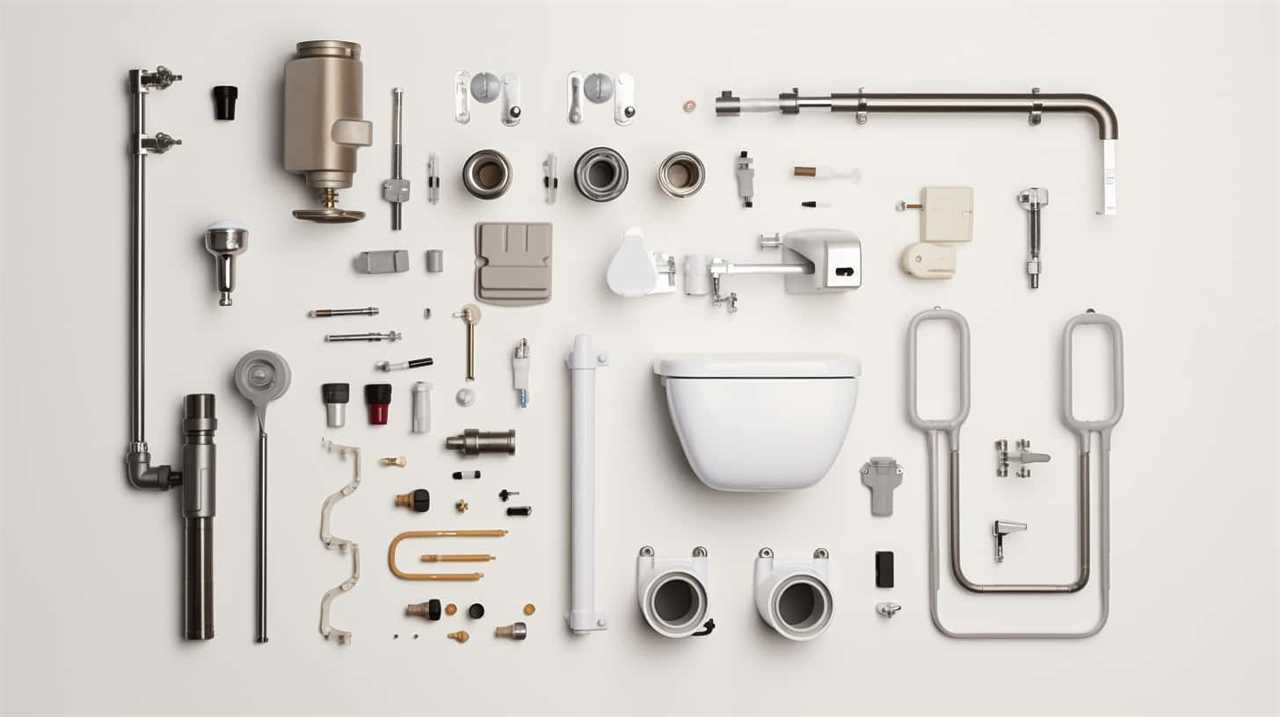
| Flush Option | Water Efficiency | Flush Volume |
|---|---|---|
| Half Flush | High | Low |
| Full Flush | Lower | High |
Water Saving Flush Option
The water saving flush option on a toilet allows us to conserve water while effectively removing waste. This feature is essential for toilet water efficiency and has a significant environmental impact.
Here are three reasons why the water saving flush option is beneficial:
- Reduces water consumption: The water saving flush option uses less water compared to a traditional full flush, resulting in significant water savings over time.
- Helps protect the environment: By conserving water, the water saving flush option reduces the strain on water resources and minimizes the environmental impact of excessive water usage.
- Cost-effective: Using less water not only benefits the environment but also lowers water bills, making the water saving flush option a practical and cost-effective choice.
Understanding the importance of water conservation and the environmental impact of dual flush systems, let’s now explore how these systems work.
How Dual Flush Systems Work
To continue our discussion on water-saving flush options, let’s delve into how these dual flush systems operate.
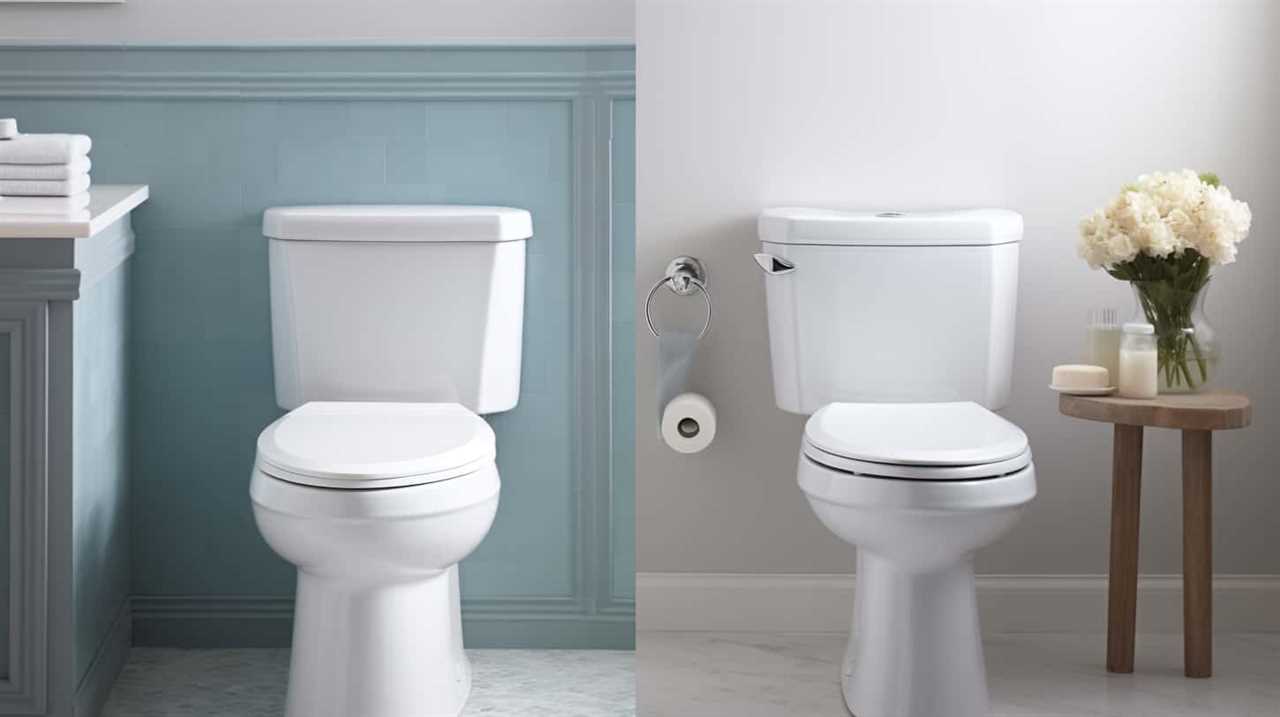
Dual flush toilets are designed to provide two flushing options – a low volume flush for liquid waste and a higher volume flush for solid waste. The purpose of this design is to reduce water consumption by allowing users to choose the appropriate flush option based on their needs.
The low volume flush typically uses around 0.8 to 1.1 gallons of water, while the high volume flush uses around 1.6 gallons. This significant reduction in water usage can have a positive environmental impact by conserving water resources and reducing water pollution.
Now that we understand how dual flush systems work and their potential benefits, let’s explore the advantages of using these two flush options.
Benefits of Using Two Flush Options
We frequently choose to utilize the two flush options on a toilet due to their numerous benefits. These benefits include:
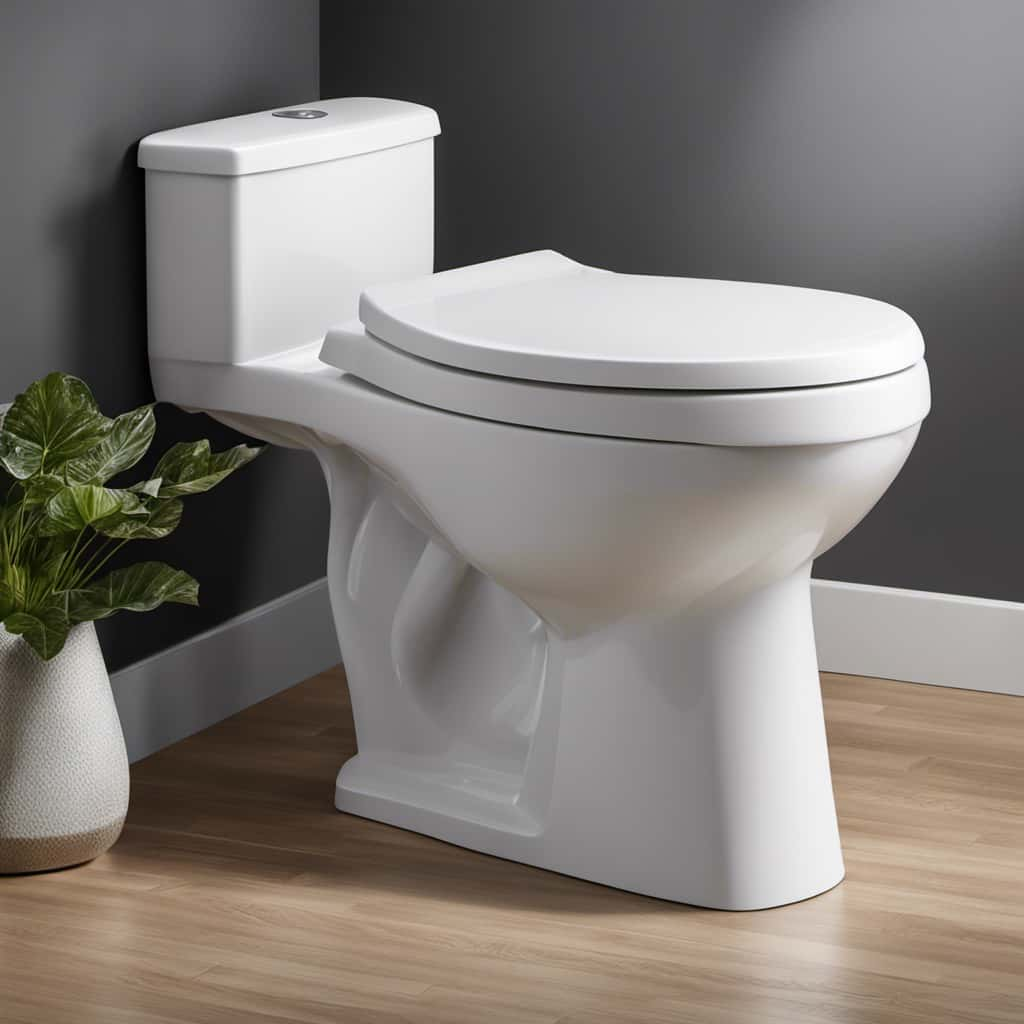
- Water Conservation: With the two flush options, we can choose the appropriate flush for different waste types, allowing us to conserve water. By using the half flush option for liquid waste, we can significantly reduce water usage compared to traditional toilets.
- Cost Savings: The two flush options can help us save money on our water bills. By using the half flush option, we can reduce the amount of water consumed per flush, resulting in lower water bills over time.
- Environmental Impact: The two flush options contribute to a greener environment. By conserving water, we reduce the strain on our water resources and minimize our overall environmental footprint.
Frequently Asked Questions
Are There Any Disadvantages to Using a Dual Flush Toilet?
There are some disadvantages to using a dual flush toilet, such as potential issues with clogging and higher upfront costs. Additionally, the environmental impact of dual flush toilets depends on water usage and disposal methods.
Can I Convert My Existing Toilet Into a Dual Flush Toilet?
Converting your existing toilet into a dual flush system is a simple and efficient process. By doing so, you can enjoy the numerous benefits that come with dual flush toilets, such as water conservation and cost savings.
Is It Possible to Save More Water by Using the Half Flush Option Instead of the Full Flush?
Using the half flush option on a dual flush toilet can save more water compared to using the full flush. This is due to the reduced water volume used during the half flush, resulting in increased water conservation benefits.
How Do I Know When to Use the Half Flush Option and When to Use the Full Flush Option?
When to use the half flush option or the full flush option on a toilet depends on the type of waste. The half flush is ideal for liquid waste, conserving water. The full flush is for solid waste.
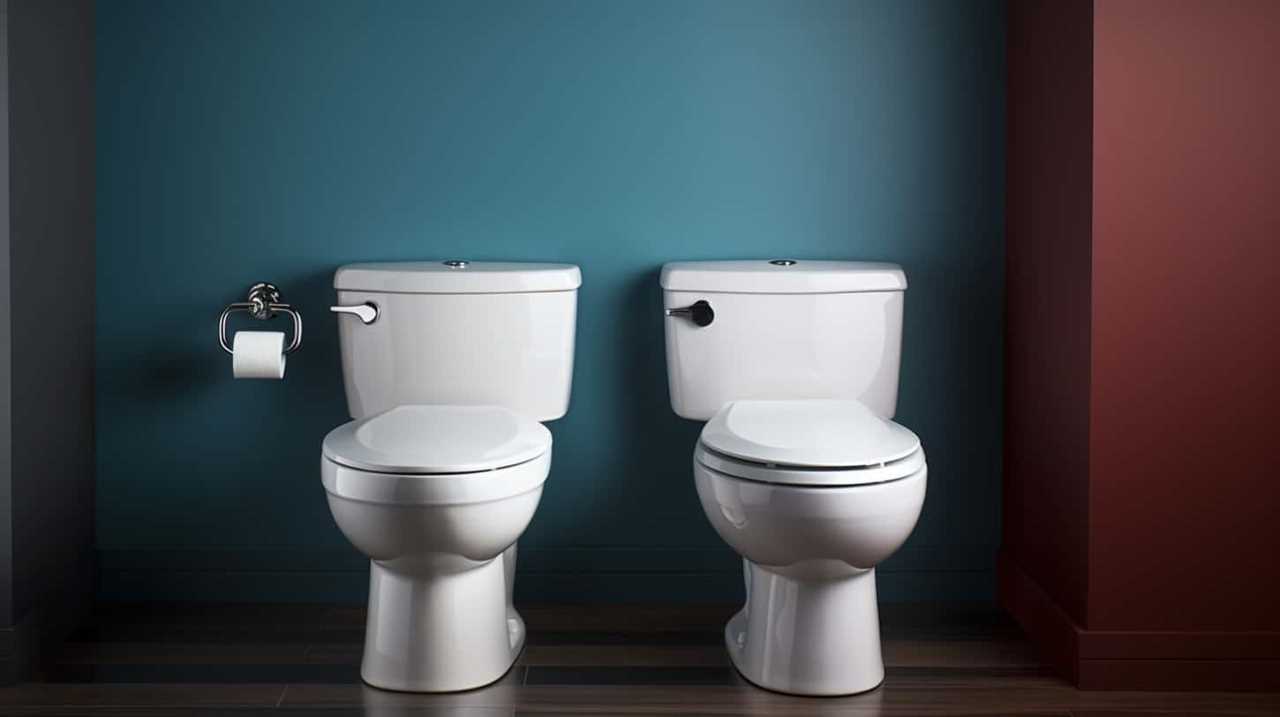
Are Dual Flush Toilets More Expensive Than Traditional Toilets?
Dual flush toilets are more expensive than traditional toilets due to their advanced technology and water-saving features. However, the benefits of these toilets, such as reduced water consumption and lower utility bills, outweigh the initial cost.
Conclusion
In conclusion, dual flush toilets offer two flush options, namely the half flush and the full flush. The half flush is designed for liquid waste, using less water, while the full flush is meant for solid waste, using more water for effective flushing.
This innovative water-saving flush option is gaining popularity due to its efficiency in conserving water. By opting for a dual flush system, individuals can contribute to environmental sustainability while enjoying the benefits of a well-functioning toilet.
So, why wait? Take the plunge and embrace this water-wise solution!
